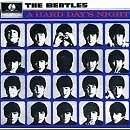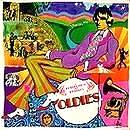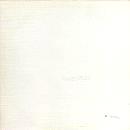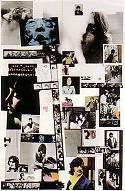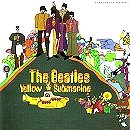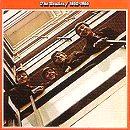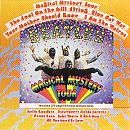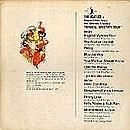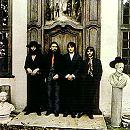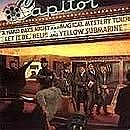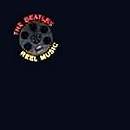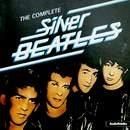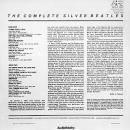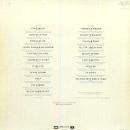 |
||||||||||||||||||||||||||||||||||||||||||||||||||||||||||||||||||||||||||||||||||||||||||||||||||||||||||||||||||||||||||||||||||||||||
Please Please Me(Parlophone PMC 1201 MONO / PCS 3042 STEREO) Side A: I Saw Her Standing There / Misery /
Anna (Go To Him) / Chains / Boys / Ask Me Why / Please Please Me
The Beatles first album was released on Friday 22nd March 1963, and stayed top for 30 weeks (which is still a British record) until it was knocked off by With the Beatles. It sold half a million in the UK, and over two million worldwide. In the early sixties, it was still standard practice for record companies to wait around for a hit single before they risked their money on an album. But when the Beatles' debut was mooted back in '62, they still hadn't got a song inside the Top Ten ('Love Me Do' having stalled at #17), so Martin made them cram the recording session into a single day. When their second single then hit the top spot one month later, EMI rushed the album out in double-quick time in an effort to get the kids to buy the same song twice. George Martin's original idea was to call it Off The Beatle Track, and record them live at The Cavern. He was quoted as saying: “I'm thinking of recording their first LP at The Cavern Club. If we can't get the sound right then we might do it somewhere else in Liverpool, or bring an invited audience into the studio. The Beatles told me they work better in front of an audience.” But he decided in the end that it would too expensive and time-consuming, so he ended up using studio recordings instead. But the album opens with their usual curtain-raiser 'I Saw Her Standing There', and closes with their standard show-stopper 'Twist And Shout', so it's got the appearance of a show... but it would've been a bit of a shit show, because all their rock 'n' roll numbers have been left out. (For a much better idea of the kind of set they were playing around this time, have a listen to the 'The Beatles Live At The Star-Club, which was recorded just six weeks before Please Please Me.) The photo on the front was taken inside EMI's London headquarters, but George Martin suggested that it might be nice having them stand outside the Insect House at London Zoo instead (because they were the 'Beatles'... geddit?). Highest chart position: Disc Weekly) #1;
Melody Maker) #1; NME) #1; Record Retailer) #1
With The Beatles(Parlophone PMC 1206 MONO / PCS 3045 STEREO) Side A: It Won't Be Long / All I've Got To
Do / All My Loving / Don't Bother Me / Little Child / Till There Was You
/ Please Mr. Postman
This had advance orders of half a million, and sold another half by September 1965 - making it the second album to sell a million copies inside the UK (the first being the South Pacific soundtrack). It stayed top of the charts for twenty-one weeks, and if you include Please Please Me as well, then that means the Beatles occupied the top spot for 51 consecutive weeks! It even made number eleven in the singles charts (because at that time, it didn't matter what size the record was, all that mattered was how many copies it sold). The cover was shot by Robert Freeman on the 22nd August '63. He was already famous for working on the first Pirelli calendar (with all the pretty women) and he also shot Khrushchev in the Kremlin (with a camera, not a gun!). But it was his black-and-white photos of the jazz-legend John Coltrane that brought him to the Beatles attention. Paul remembered: “He arranged us in a hotel corridor: it was very un-studio-like. The corridor was rather dark, and there was a window at the end, and by using this heavy source of natural light coming from the right, he got that very moody picture which most people think he must have worked at forever and ever. But it was only an hour. He sat down, took a couple of rolls, and that was it.” Freeman himself remembered: “They had to fit in the square format of the cover, so rather than have them all in a line, I put Ringo in the bottom right corner, since he was the last to join the group. He was also the shortest.” The original idea was to paint the picture from edge to edge - with no bleeding, title.. nothing. But the big-wigs vetoed it, on the grounds that the Beatles weren't yet famous enough to carry a nameless cover. [The first album to carry an edge-to-edge cover was The Rolling Stone's self-titled debut, released a few months later.] They also tried to pull it because the Beatles weren't smiling, and it was only after George Martin waded in that they won the day. Freeman was eventually paid £75 for his troubles (three times the normal fee). Highest chart position: Disc Weekly) #1;
Melody Maker) #1; NME) #1; Record Retailer) #1
A Hard Day's Night(Parlophone PMC 1230 MONO / PCS 3058
STEREO) Side A: A Hard Day's Night / I Should Have
Known Better / If I Fell / I'm Happy Just To Dance With You / And I
Love Her / Tell Me Why / Can't Buy Me Love
This became the fastest-selling album in British history, shifting well over 1.5 million copies in the first two weeks. And they also became the first band to simultaneously hold onto the top spots in both the album and the singles charts in the UK and the States. It was also the first album to be made available in true stereo, and it's the only one to have every single song written by Lennon/McCartney. John wrote the lion's share - with ten out of thirteen tracks. The last group to attempt a whole album of original songs was Buddy Holly and the Crickets, way back in the fifties. Highest chart position: Disc Weekly) #1;
Melody Maker) #1; NME) #1; Record Retailer) #1
Beatles For Sale(Parlophone PMC 1240 MONO / PCS 3058 STEREO) Side A: No Reply / I'm A Loser / Baby's In
Black / Rock And Roll Music / I'll Follow The Sun / Mr. Moonlight /
Kansas City/Hey-Hey-Hey-Hey! This entered the charts at number one, knocking off A Hard Day's Night. It then came back a month later, knocking off the Rolling Stones. It was recorded just two months after A Hard Day's Night came out, and seeing as it was their fourth album in 21 months it was full of cover-versions, because they couldn't write the bleedin' things fast enough. George Martin explained: “They were rather war-weary during Beatles For Sale. One must remember that they'd been battered like mad throughout '64, and much of '63. Success is a wonderful thing, but it is very, very tiring.” Their diary for 1964 makes you knackered just reading it: during the previous nine-months they delivered one feature film, two albums, two singles, one EP, one world tour, two British tours and two American tours (not forgetting all the TV shows... radio appearances... photo shoots etc). Their rapidly dwindling enthusiasm for 'Beatlemania' was becoming increasingly obvious to everyone around them, as their choice of closing track shows. This lack-lustre attitude was also reflected in the cover, which showed them looking pissed-off in Hyde Park. The inner sleeve showed them standing in front of a montage of photos - including one of busty-blonde Jayne Mansfield, who they would later meet round Burt Lancaster's house. It has been suggested that this photo-montage was the inspiration for the Sgt. Peppers cover. Derek Taylor wrote some prophetic sleeve-notes: “There's priceless history between these covers. When, in a generation or so, a radioactive, cigar-smoking child, picnicking on Saturn, asks you what the Beatle affair was all about, don't try to explain all about the long hair and the screams! Just play them a few tracks from this album and he'll probably understand. The kids of AD2000 will draw from the music much the same sense of well being and warmth as we do today.” Highest chart position: Disc Weekly) #1;
Melody Maker) #1; NME) #1; Record Retailer) #1
Help!(Parlophone PMC 1255 MONO / PCS 3071 STEREO) Side A: Help! / The Night Before / You've
Got To Hide Your Love Away / I Need You / Another Girl / You're Going To
Lose That Girl / Ticket To Ride
This had advance orders of 250,000, and went on to sell two-and-a-half million worldwide. It was also the first album in history to enter the chart at number one. And it did the world a favour by knocking The Sound Of Music off the top spot. But more importantly, this marked the start of their purple patch, and critics and contemporaries alike were amazed that they could relegate a song like 'Yesterday' to the non-soundtrack side. Everyone assumes that the semaphore signals spell out H-E-L-P, but they don't. They actually spell out N-U-J-V. Highest chart position: Disc Weekly) #1;
Melody Maker) #1; NME) #1; Record Retailer) #1
Rubber Soul(Parlophone PMC 1267 MONO / PCS 3075
STEREO) Side A: Drive My Car / Norwegian Wood
(This Bird Has Flown) / You Won't See Me / Nowhere Man / Think For
Yourself / The Word / Michelle
This had advance orders of half a million, and knocked Help! off the top. The title was a pun on the phrase “plastic soul”, which American musicians had been levelling (insultingly) at the British R&B scene. It is generally accepted as being their first 'classic' album - a real watershed in their career. George Martin said: “Up until then we'd been making albums rather like a collection of singles. Now we were really beginning to think about albums as a bit of art on their own.” [N.B.: Six of the songs ended up on their greatest hits collection 1962-1966 - the most achieved by any Beatles album.] It is probably the most rushed album in their entire catalogue because they were still up making it the day before the deadline. It only took two weeks from start to finish. And what's more, they had it in the shops eighteen days after mixing it! A quick gander at the lyrics will show you that John and Paul were experiencing women-problems when they did it: Paul was having trouble keeping Asher in the kitchen, and John was becoming increasingly bored with his wife. There's no more 'She Loves You', or 'I Want To Hold Your Hand'. Instead we get: 'You Won't See Me' and 'I'm Looking Through You', which border on being insulting (I can't imagine Jane Asher was too pleased when she heard those!); the girl in 'Girl' is the kind of woman who “puts you down/When friends are there”, and the one in 'Norwegian Wood' gets her house burnt down! And most amusingly of all, John actually threatens to murder his missus in 'Run For Your Life'! It was also the last time that Robert Freeman took the cover photo. He took it in John's back-garden. The distorted image was supposed to give a clue to the fans about their recent conversion to pot. (And there are a couple of other clues on the album as well - the most famous one being the sucking sound on 'Girl', supposed to represent them dragging on a joint.) It is probably the most 'marijuana-flavoured' album in their catalogue. After this came out, they turned increasingly to LSD. Highest chart position: Disc Weekly) #1;
Melody Maker) #1; NME) #1; Record Retailer) #1
Revolver(Parlophone PMC 7009 MONO / PCS 7009
STEREO) Side A: Taxman / Eleanor Rigby / I'm Only
Sleeping / Love You To / Here, There And Everywhere / Yellow Submarine
/ She Said She Said They were originally going to call this Abracadabra, but someone beat them to it. They also toyed around with Magic Circles and Beatles On Safari, before finally settling on Revolver. Ringo suggested calling it After Geography - as a pun on the Rolling Stones' latest LP, Aftermath. (Geddit?) EMI drip-fed the radio stations songs in twos and threes to build up anticipation, and by the time it came out it had advance orders of well over 300,000. Worldwide sales eventually rose to over two million. Many people vote for it as the best-ever album, and only half of the songs are about love - the rest are about taxation, drugs, death, loneliness, and there's even some Tibetan Buddhism in there. To appreciate just how quickly they were developing in mid-66, remember that Help!, Rubber Soul and Revolver were all released in the space of a single year, and Rubber Soul, Revolver and Sgt. Peppers were released in a year-and-a-half. Most bands these days take over a year to deliver a single LP. (And that's not even including their non-album singles and B-sides!) The cover-art was designed by Klaus Voormann (then playing bass with Manfred Mann), whom they met in Hamburg during the early sixties. It won him a Grammy for best cover artwork. (And if you look at the middle of the right-hand side, then you can see a tiny picture of him.) Highest chart position: Disc Weekly) #1;
Melody Maker) #1; NME) #1; Record Retailer) #1
A Collection Of Beatles' Oldies(Parlophone PMC 7016 MONO / PCS 7016 STEREO) Side A: She Loves You / From Me To You / We
Can Work It Out / Help! / Michelle / Yesterday / I Feel Fine / Yellow
Submarine
After the runaway success of Revolver - and the debacle of the American and Philippines tours - the Beatles decided that they were entitled to a little break. So George Martin informed EMI that there wouldn't be any new product for Christmas. So they rushed out this greatest hits package instead. It's sole-redeeming feature was an unreleased song, called 'Bad Boy'. The Americans had already heard it on the Beatles VI LP, but it hadn't been released in Britain yet. Despite the extra song it was the first album not to make No. 1 - because the No. 1 that Christmas was 'The Sound Of Fucking Music' again! Highest chart position: Disc Weekly) #4;
Melody Maker) #4; NME) #6; Record Retailer) #7
Sgt. Pepper's Lonely Hearts Club Band(Parlophone PMC 7027 MONO / PCS 7027 STEREO) Side A: Sgt. Pepper's Lonely Hearts Club
Band / With A Little Help From My Friends / Lucy In The Sky With
Diamonds / Getting Better / Fixing A Hole / She's Leaving Home / Being
For The Benefit Of Mr. Kite! This stayed at the top-spot for twenty-seven weeks. (It had twenty-three weeks when it was originally released, and then another one in November, another two in December, and a final one in February.) It was eventually knocked off by Val Doonican's superbly titled Val Doonican Rocks - But Gently. When it came out Kenneth Tynan of The Times got a little bit carried away and called it “a decisive moment in the history of Western civilisation.” The New York Times Book Review heralded it as “a new and golden renaissance of song” and the American critic, Abbie Hoffman (who was a little more down-to-earth) said it was like “Beethoven coming to the supermarket.”
Free cardboard cut-outs It came free with a couple of Sgt. Pepper cut-outs, two badges, and a stand-up Sgt. Pepper figure. It can also lay claim to a couple of 'firsts'. Because it was the first album to have the lyrics printed on the back, and it was the first album not to be banded into individual tracks. It also had a 'song' in the run-out groove. (It only lasts for about two seconds, but if you left the needle going round and around then it would carry on all night. It consisted of a high-frequency note - inaudible to humans, but dogs could hear it - and some nonsense chatter that took a full night to record. It took them as long to record that one 'song', as it did to tape half of their entire first album!) It was (and still is) one of the most drugged-up records ever written. The BBC banned 'A Day In The Life' and 'Lucy In The Sky With Diamonds' from the airwaves, and they had their suspicions about 'Being For The Benefit Of Mr. Kite!', 'Fixing A Hole' and 'Lovely Rita' as well. The future US Vice-President, Spiro Agnew, claimed that 'With A Little Help From My Friends' was a “tribute to the power of illegal drugs”, and attacked 'She's Leaving Home' as being an advert for abortion (the “man from the motor-trade” was supposed to be an euphemism!). People also thought that the green plants above the 'Beatles' piece were marijuana (but they're not - they're peperomia). Paul's fingerprints can be heard all over this album. He blamed John and George's lack of input on the prodigious amounts of LSD they were taking at the sessions. (There's a famous story from the 'Getting Better' sessions that's worth reading.) He even took the lead on a few songs, after George made it plain that he couldn't care less. In fact, George only contributed two songs to the entire project - one of them was then unceremoniously dumped ('Only A Northern Song'), and the other one didn't feature the other Beatles at all! In fact, between December '67 and the end of January, the only thing that George was required to do for the album was ring a hand-bell, beat a conga drum, and go “Aaaah” on 'When I'm Sixty-Four'! The original plan called for a television documentary as well, called The Making Of Sgt. Pepper, and it was going to be an hour long, cost fifty-two grand to make, and Ian Dallas was called in to write the script. But the plan was dropped at the last minute, presumably because the BBC banned half of the songs.
The Fool's inner bag The cover artwork was designed by Paul and Peter Blake, and shot by Michael Cooper. You can read all about the photo session by clicking here. [An interesting fact about Michael Cooper: He also shot a copy-cat cover for the Stones' Her Satanic Majesties Request LP. And if you look closely at the flowers, then you can see four images of the Beatles!] The centrefold was originally going to be done by the Dutch design group, The Fool, but when Robert Fraser saw what they came up with they got relegated to the inner bag. They painted up a psychedelic rainbow mountain scene, with gay birds and cockatoos “like an LSD-influenced Chinese willow-pattern” said Barry Miles. Imagine that! “And we loved it,” said Paul. “But Robert wouldn't allow it, which was very ballsy because he actually didn't have the right. We said, 'We just won't do it your way,' and right to the end almost it was going to be the Fool's cover. We resisted that for quite a few days. But I've since seen it and I know that he was quite right.” The fact that the back sleeve showed Paul with his back to the camera inevitably contributed to the rumour that he died in '66, and had been replaced with a look-a-like called William Campbell, as did many of the other 'clues' on the sleeve (like the fact that he's the only one holding a black instrument... and there's a hand hovering over his head... and it looks like they're all clustered around a grave etc). For a list of all of these clues, click here. A list of all the names on the cover can be found here. Highest chart position: Disc Weekly) #1;
Melody Maker) #1; NME) #1; Record Retailer) #1 UK sales figures: after 1 week - ¼ million; after 1 month: ½ million; after 6 years: 1 million
The Beatles' First(Polydor 236201 STEREO) Side A: Ain't She Sweet / Cry For A Shadow /
Let's Dance / My Bonnie / Take Out Some Insurance On Me, Baby / What'd I
Say
There is much confusion about the date this came out. Some say that Polydor released it in June '64 but Hans Olof Gottfridsson, in his excellent book The Beatles - From Cavern To Star-Club has found out that they pressed it up with old labels. The new date has been pushed back to September '67 to tie in with the record number on the sleeve. The fact that the LP does not appear in any of the charts for 1964, even though Beatlemania was raging round their ears just goes to prove the date is fishy. The 1964 copies were probably just imported over from Germany. Highest chart position: Record Retailer) didn't enter
The Beatles(a.k.a. 'The White Album')(Apple PMC 7067-7068 MONO / PCS 7067-7068
STEREO) Side A: Back In The USSR / Dear Prudence /
Glass Onion / Ob-La-Di, Ob-La-Da / Wild Honey Pie / The Continuing
Story Of Bungalow Bill / While My Guitar Gently Weeps / Happiness Is A
Warm Gun This was the first album to be released on their new Apple label. It was also the first double album in history to make it to number one, and had advance orders of a quarter of a million. It sold four million units in the first month and even managed to make the singles chart! (And that has never happened to a double album before... or since!) Worldwide sales topped six and a half million by the end of the decade. Most of the songs are acoustic because they were written in India, where they only had acoustic guitars to play around with. In fact, they ended up writing so many new tunes in India that George was moved to complain: “We're not fucking here to do the next album, we're here to meditate!” George Martin tried to convince them that it would be better to release one glorious 14-track album instead, but they were having none of it. “What else do you do,” said John, “when you've got so many songs and you want to get rid of them so that you can write some more? There was a lot of ego in the band, and there were a lot of songs that maybe should have been elbowed or made into B-sides.” Lester Bangs described it as “the first album in the history of rock by four solo artists in one band.” George said: “There was a lot of individual stuff, and, for the first time, people were accepting that it was individual.” John explained: “It was really just me and a backing band, Paul and a backing band... I enjoyed it, but Paul was upset about the White Album. He never liked it because I did my music, he did his, and George did his. And first, he didn't like George having so many tracks, and second, he wanted it to be more of a group thing, which really meant more Paul. So, he never liked that album. But I always preferred it to all the other albums, including Pepper, because I thought the music was better. The Pepper myth is bigger, but the music on the White Album is far superior, I think. I wrote a lot of good stuff on that. I like all the stuff I did on that and the other stuff as well. I like the whole album.” Paul was quite happy with it too (despite what John says!) “I think it's a fine little album,” he said. “And the fact that it's got so much on it is one of the things that's cool about it... It was great. It sold. It's the bloody Beatles White Album. Shut up!” The sessions were famously tense (Paul described it as “the tension album”), and led to a number of walk-outs. The main rows were between Paul and George (who felt he was being treated as a junior member of the band), and between John and everyone (because of his insistence on bringing Yoko into the studio). He thought that Yoko was being patronised every time she opened her mouth. It finally became too much for Ringo, and he walked out of the sessions in August. And even the mild-mannered George Martin felt the need to take a months break in September (during which time they recorded eight songs without him). Their engineer, Geoff Emerick, also quit - pissed off at the amount of verbal abuse he was getting. He didn't return until the Abbey Road sessions, a year later. The sleeve was designed by pop-artist Richard Hamilton. He originally wanted to paint the sleeve with a coffee cup stain, but they deemed it “too flippant.” He then suggested numbering the sleeves, “to create the ironic situation of a numbered edition of something like five million copies.” Paul was particularly enamoured with the idea, and Pete Shotton recalled him saying: “'In a few months time we're going to have an enormous lottery, and the person with the winning number will win some fantastic prize. It'll be a real selling point. Everybody will want to buy the album to get that number.' So I said, 'Actually Paul, I really don't think that's such a terrific idea. It sounds a bit cheap to me. The Beatles don't need those kinds of gimmicks to sell records.'” In the end they all agreed with Pete, and the lottery idea was dropped. The first twenty-five numbers were reserved for the Beatles and their friends and family. (John got the first copy, said Paul, “because he shouted the loudest.”) But it is unknown exactly how many numbers were issued in all, because some of them were damaged in the printing process and never replaced. It is therefore impossible to be 100% certain whether a missing number exists. It is known, however, that there were multiple copies of the number 2,000,000 - because Capitol ordered a dozen copies as a souvenir. The numbers were eventually discontinued completely in 1970, and by 1975 even the embossed 'The BEATLES' was dropped in favour of a straight print.
It also came with four photos of The Beatles, and a large poster with the words on the back. Paul got into considerable trouble for allowing a nude picture of himself to appear on the poster - even though he was hidden behind a pole. Derek Taylor said: “All this work, all these tracks, all this talent - and all their dirty little minds focus on is one tiny picture.” But seeing as this was only a few weeks after John's controversial Two Virgins cover, perhaps it wasn't surprising. [N.B.: the poster also had a nude picture of John sitting cross-legged on the bed, but that passed without comment! Perhaps the public were getting used to seeing John's nob.] The poster also included a photo of Ringo dancing with Elizabeth Taylor, and one of John and Paul in leather jackets taken in Paris. This was also the last Beatles album to be mixed in both mono and stereo. And every single song has at least two different versions knocking around. They toyed around with the idea of calling it A Doll's House, but another group beat them to it. Highest chart position: Melody Maker) #1;
NME) #1; Record Retailer) #1
Yellow Submarine(Apple PMC 7070 MONO / PCS 7070 STEREO) Side A: Yellow Submarine / Only A Northern
Song / All Together Now / Hey Bulldog / It's All Too Much / All You
Need Is Love Although this was supposed to be the soundtrack to the film, it didn't come out until seven months after the film had been released, and a lot of the songs were left out. The reason for the delay was that they wanted the White Album to come out first, and part of the reason it did so badly was because the White Album was still riding high at number one. The whole of the second side consists of George Martin's orchestral scores - something that didn't exactly meet with universal approval: “Brian made a mistake by letting George put in all those fills on Yellow Submarine, the Sea Of Holes shit,” said John. “He recorded all this terrible shit that went out with the album.” The press were critical too, and slated it as being a waste of money, so they briefly considered re-releasing it as an EP. They even had a running order worked out. Side A was going to be: 'Only A Northern Song', 'Hey Bulldog' and 'Across The Universe', and Side B was 'All Together Now' and 'It's All Too Much'. But then they realised that this would piss off everyone who had already bought the album! In the end they got so fucked off with the whole concept that they just wanted rid of it. You can see how little they cared by re-reading the sleeve notes - Derek Taylor devoted the entire space to a review of the White Album! Highest chart position: Melody Maker) #4;
NME) #3; Record Retailer) #3
Abbey Road(Apple PCS 7068 STEREO) Side A: Come Together / Something /
Maxwell's Silver Hammer / Oh! Darling / Octopus's Garden / I Want You
(She's So Heavy) This managed to reach number one twice, playing tag with The Rolling Stones' classic LP, Let It Bleed. It sold five million copies in it's first year, and remains their best-selling album of all-time. The long medley was originally going to be called 'The Long One', or 'Huge Medley', and had a different running order. It started out as 'You Never Give Me Your Money', 'Sun King', 'Mean Mr. Mustard', 'Her Majesty', 'Polythene Pam', 'She Came In Through The Bathroom Window', 'Golden Slumbers', 'Carry That Weight' and 'The End', but Paul decided to take 'Her Majesty' out. But instead of chucking it away the balance engineer pasted it onto the end, and when Paul heard it the next day he decided that he liked it again, so he left it in. And that is why there's such a long silence before 'Her Majesty' kicks in. The 'Long Medley' section was widely assumed to be Paul's idea, but he explained: “We did it that way because John and I had a number of songs, which were great as they were, but we'd finished them. It often happens that you write the first verse of a song and then you've said it all, and can't be bothered to write a second verse, repeating or giving a variation. So, I said to John, 'Have you got any bits and pieces, which we can make into one long track?'” John was originally quite keen on the idea, and was reported as saying: “Paul and I are working on a kind of montage that we might do as a piece on one side. We've got about two weeks to finish the whole thing, so we're really working at it.” But by the end of the year he had completely changed his tune, and started complaining: “They weren't real songs. They were just bits and pieces stuck together... it's a pretentious cheat.” (But he didn't have any problems with 'A Day In The Life', and 'Happiness Is A Warm Gun', which both used the same idea.) His change of heart can be explained away with his change of image. The intervening six months had had a profound effect on him: he had enjoyed his first taste of artistic freedom at the Toronto concert; he had released several new solo records, and had got his picture in the papers with his peace campaign. In his mind, the 15-minute medley was now a sickly-sweet McCartney concoction - scarcely worthy of a man who had world peace in his sights. For a while, he even insisted on having all of his songs on side one, and Paul's on side two - that's how far they'd fallen out! He was also the prime-mover in releasing 'Something' and 'Come Together' as a single, “So I can listen to them without having to listen to the rest of the album.” They were originally going to call the album Everest (after Geoff Emerick's favourite brand of cigarettes) which would have been a fitting way to bow out, but when it came to taking the pictures they were so pissed off with each other that they couldn't be bothered to go any further than down the street. The photo was taken by Iain Macmillan on the 8th August, at ten in the morning. He had to stand up a step-ladder in the middle of the street while the police held up the traffic. He shot numerous poses, some walking away from the studio, and some towards it (the final shot shows them walking towards it). In a couple of them Paul wore his sandals, but in the one on the cover he's bare-foot. This fuelled the fires of the 'Is Paul dead?' debate, because being barefoot is supposed to be an old Mafia sign of death. And it was also pointed out that he was carrying his fag in his right-hand, when everyone knew that he was left-handed. And to top it off, the number plate on the parked car was LMW 28IF, which was supposed to signify that he'd have been 28 if he'd lived (when, in actual fact, he was 27). The poor guy who owned the car had it nicked soon after, but happily made a packet selling the plate at Sotheby's. (You can read all of these 'Paul is dead' clues here.) Highest chart position: Melody Maker) #1;
NME) #1; Record Retailer) #1
Let It Be Box-Set(Apple PXS 1 STEREO) Side A: Two Of Us / Dig A Pony / Across The
Universe / I Me Mine / Dig It / Let It Be / Maggie Mae The box-set had a book called The Beatles Get Back, and some photos and dialogue from the film. It was never sold separately, and the box-set is no longer available, so a decent copy is fairly rare. The album has a very convoluted history, and went through three distinct phases. The first one was called 'Get Back - With 'Let It Be' And 11 Other Songs', and they even had the cover photo worked-out, which was going to be the same pose as the Please Please Me sleeve from '63. (The photo was eventually used on the 1967-1970 LP in '73.) The running order was, Side A: 'One After 909'; 'Rocker' (link track); 'Save The Last Dance For Me' (link track); 'Don't Let Me Down'; 'Dig A Pony'; 'I've Got A Feeling' and 'Get Back'. Side B was: 'For You Blue'; 'Teddy Boy'; 'Two Of Us'; 'Maggie Mae' (link track); 'Dig It'; 'Let It Be'; 'The Long And Winding Road' and 'Get Back' (Reprise). The producer, Glyn Johns, had tried to get the rough-and-ready sound of a 'work in progress', and had even included snippets of chatter and unfinished takes. He said: “I thought it would make the most incredible Beatles album ever, because it was so real. I was extremely proud of it. Always have been.” But his baby hit a snag in September '69, because the accompanying TV show was pushed back until December. Allen Klein then weighed in and announced that the show would be scrapped and replaced with a movie in 1970. This meant that Johns' LP was also dumped, because it would no longer be suitable for use as a soundtrack. He then reconvened for attempt number two in January 1970. For his second attempt he was forced to introduce some of the songs in the movie - knocking out 'Teddy Boy' and adding George's 'I Me Mine' and John's 'Across The Universe'. He also moved 'Let It Be' to the end of side one. But this was rejected as well, prompting Klein to sound out Spector. John said: “Up until then we believed intensely in what we were doing. Suddenly we didn't believe. It'd come to a point where it was no longer creating magic. We were going to let it out in a really shitty condition, to break the myth. It was like: 'This is what we're like with our trousers off. So would you please end the game now?'” George Martin had bailed out long ago, realising that the band was in self-destruct mode: “It was the end. I didn't want to be a part of it anymore,” he said. It was in this miserable condition that Phil Spector was given the unenviable task of rescuing the LP. And he didn't have much time to do it either, because the film was due out in five months! Understandably, he decided to limit his listening to the acetates that Johns had already run up - and the still-unfinished movie rushes. His first decision was to replace 'Two Of Us' with the clearly superior version on the 31st. He also switched the lousy 'Dig It' from the 22nd and the half-cut 'I've Got A Feeling' to the versions on the roof (cutting 'Dig It' from 4mins to 51secs in the process). But other songs fared less well. He poured his wall-of-sound onto 'The Long And Winding Road', 'I Me Mine', and re-mixed 'Let It Be'. When the album was finally ready for release in April 1970, the Get Back title was no longer deemed appropriate, because the 'Get Back' single had already been available for over a year. The name was thus switched to 'Let It Be' (the title of the next single), and the cover was replaced with some inferior film shots. Although the movie was fairly well-received at the time, the soundtrack was widely panned - with critics calling it a “cheapskate epitaph, a cardboard tombstone, a glorified EP.” Most people thought the songs were patchy, over-produced and over-valued (Paul complained about it going out in a box-set, because it upped the price by 33%). None of the other Beatles seemed to care too much and John explained: “He [Spector] was given the shittiest load of badly recorded shit with lousy feeling to it - ever, and he made something out of it. It wasn't fantastic, but I heard it, and I didn't puke.” Highest chart position: Melody Maker) #1;
NME) #1; Record Retailer) #1
Let It Be(Apple PCS 7096 STEREO) Track listing same as the box-set
Six months after the box-set came out, Let It Be was re-released as a stand-alone album, minus the big box and picture book. If you compare the pictures above, then you'll see that the new cover displayed a red apple instead of the usual green one, giving rise to numerous rumours and counter-rumours - most people think they did it to show everyone they were “over-ripe” and past their sell-by-date.
The Beatles / 1962-1966(a.k.a. 'The Red Album')(Apple SKBO 3403) Side A: Love Me Do / Please Please Me /
From Me To You / She Loves You / I Want To Hold Your Hand / All My
Loving / Can't Buy Me Love Highest chart position: Record Retailer) #3
The Beatles / 1967-1970(a.k.a. 'The Blue Album')(Apple SKBO 3404) Side A: Strawberry Fields Forever / Penny
Lane / Sgt. Pepper's Lonely Hearts Club Band / With A Little Help From
My Friends / Lucy In The Sky With Diamonds / A Day In The Life / All
You Need Is Love Highest chart position: Record Retailer) #2
Rock 'N' Roll Music(Parlophone PCSP719) Side A: Twist And Shout / I Saw Her Standing
There / You Can't Do That / I Wanna Be Your Man / I Call Your Name /
Boys / Long Tall Sally George Martin described this troubled LP in his autobiography, All You Need Is Ears: “Bhaskar Menon had become the president of Capitol Records in America, and in 1976 he phoned me to say that he was proposing to issue an album called Rock And Roll Music, using some of the early Beatles numbers. He asked me if I could approve the tapes before they went out, since they couldn't get hold of any of the Beatles. So I went along to listen - and was appalled!” The problem stemmed from the fact that back in '63, of course, all of the songs were done on two-track - with the rhythm on one side and the vocals on the other and then combined to make a mono mix. “But EMI were terrified of the Beatles,” he said, “who had issued an edict that the tapes must not be touched in any way. And if they were reissued it had to be exactly as they were recorded. EMI had taken this absolutely literally. They had put the tapes on a transfer machine and were going to issue them just as they were - but in stereo! The effect was disastrous. When we had made the original recordings we had one track for the rhythms and the other for the voices, and we had put the rhythm track down in volume in order to avoid distortion. The result was that the voices sounded terribly forward. Not only that, but when they stopped singing there was an awful lot of dirt coming up on the vocal track, because when we recorded live we had left the mikes open - which of course hadn't mattered in mono. But in stereo - ugh! And, of course, all the voices were on one side, and all the backing on the other.” Martin then spent two days remixing the whole lot at Capitol. But EMI were adamant. It had been ten long years since Martin was last employed at EMI, and it wasn't really his job to mess around with the tapes. So not only did he not get paid (not that he minded), he also got the brush-off. “Fierce rows broke out with the people in England,” he said. “Roy Featherstone, the head of EMI records, said that I shouldn't do it, and that they would be in trouble with the Beatles.” The end result was that Capitol put it out with Martin's mix, and EMI shipped it in duff stereo. So if you ever find a copy in the shops - make sure that it's the Capitol version! The childish cover art didn't fare any better - it was designed by Roy Kohara, who, for some unknown reason, decided to transport the Beatles back into 1950's America. John originally asked them if he could design the whole thing himself, but EMI turned him down (probably because they'd seen his erotic lithographs and wondered what he'd come up with!). Highest chart position: NME) #10; Record
Retailer) #11
Magical Mystery Tour(Parlophone PCTC255) Side A: Magical Mystery Tour / The Fool On
The Hill / Flying / Blue Jay Way / Your Mother Should Know / I Am The
Walrus
Live! At The Star-Club In Hamburg, Germany 1962(Bellaphon BLS 5560) Side A: I Saw Her Standing There / Roll Over
Beethoven / The Hippy Hippy Shake / Sweet Little Sixteen / Lend Me Your
Comb / Your Feet's Too Big This was recorded during their two-week stint at the Star-Club in December 1962. Adrian Barber was in the middle of building an on-stage recording facility and tested it out on every act that played. One of the other acts to benefit was Kingsize Taylor, who, upon hearing of the tapes, asked Barber for a copy. And seeing as the sound was shit and the Beatles hadn't hit the big time yet, he gladly handed them over as a present. A couple of years later, of course, Taylor couldn't believe his luck and tried selling them off to Brian Epstein. But he only him offered twenty quid, so he put them back in his kitchen drawer and forgot all about them for five years. For some reason that Taylor has never explained, he then gave them to John Seddon to see if he could clean up the sound. He fiddled around with them for a couple of months, but when his shop closed down in 1968 the tapes were bundled up in a box and forgotten about. It wasn't until 1971 that interest was reawakened. The Beatles old manager, Allan Williams, was setting up a big promotional bash for all the bands in the city and asked Taylor if he wanted to get The Dominos back together. Whilst they were reminiscing Taylor told him all about the Star-Club tapes and Allan's eyes lit up. They searched through the dusty shop and retrieved the tapes. Taylor partnered up with Allan and started hawking them around town. You may think that the tapes would have been snapped up by the first label who had a listen, but you would be wrong. There were a couple of things working against it. One was the sound. The quality was absolutely awful (even worse than the CDs available now). The second thing working against them were the legal problems - they were highly dubious about Allan's claim on the tape. Bill Harry had advised Williams that when the tape was recorded in December '62, the Beatles had already signed with Parlophone. So if anyone owned the tape, it was EMI. But Williams didn't let a little matter like that get him down. He simply said that they were recorded in April '62! Unfortunately, this also meant that the tape would be pre-Ringo, so he suggested that it was recorded on a night when Pete sick. (That is why the sleevenotes say it was recorded in the Spring of 1962.) The first person to take an active interest was the ex-A&R man at Polydor, Paul Murphy, who worked with Berthold Kaempfert on the Tony Sheridan sessions. He and Williams started up a brand-new company to handle the project - Lingasong Records, and duly started sprucing up the tapes. By the time this was completed he had already bought out Williams, and signed up with Double H Licensing in New York. With the release date getting closer every day, Apple decided to sue Lingasong and Murphy to stop it coming out. Unfortunately, the court sided with Lingasong. The tapes had been mooted in the press for years and years, they said, so they could hardly kick up a fuss now - especially when they had already turned down a chance to buy them! Another important result of the trial was that it established beyond any reasonable doubt that the tapes were made in December. The prosecution pointed out that Paul can be heard saying, “Very best wishes and seasonal greetings,” and John says: “Christmas comes but once a year and when it comes it brings good cheer.” They also sang a version of Tommy Roe's 'Sheila', which wasn't released until May '62. Highest chart position: NME) #27; Record Retailer) didn't enter
The Beatles At The Hollywood Bowl(Parlophone EMTV4) Side A: Twist And Shout / She's A Woman /
Dizzy Miss Lizzy / Ticket To Ride / Can't Buy Me Love / Things We Said
Today
Highest chart position: Record Retailer) #1
Love Songs(Parlophone PCSP721) Side A: Yesterday / I'll Follow The Sun / I
Need You / Girl / In My Life / Words Of Love / Here, There And
Everywhere
Highest chart position: Record Retailer) #7
The Beatles Collection(EMI BC13) Contains the following albums: Please Please
Me / With The Beatles / A Hard Day's Night / Beatles For Sale / Help! /
Rubber Soul / Revolver / Sgt. Pepper's Lonely Hearts Club Band / The
Beatles (a.k.a. 'The White Album') / Yellow Submarine / Abbey Road / Let
It Be
This was just a collection of the 12 British albums, with a bonus album called Rarities.
Rarities(Parlophone PSLP261 MONO) Side A: Across The Universe [Wildlife
Version] / Yes It Is / This Boy / The Inner Light / I'll Get You / Thank
You Girl / Komm, Gib Mir Deine Hand / You Know My Name (Look Up The
Number) / Sie Liebt Dich Parlophone used the original mono versions of the songs, although the sleeve notes said that 'You Know My Name (Look Up The Number) was in stereo - but it wasn't! The album proved so popular that EMI released it as a stand-alone LP in October '79, and it rose to #71 in the Record Retailer chart.
Hey Jude(Parlophone PCS7184) Side A: Can't Buy Me Love / I Should Have
Known Better / Paperback Writer / Rain / Lady Madonna / Revolution
The Beatles' Ballads(Parlophone PCS7214) Side A: Yesterday / Norwegian Wood (This
Bird Has Flown) / Do You Want To Know A Secret? / For No One / Michelle
/ Nowhere Man / You've Got To Hide Your Love Away / Across The Universe
/ All My Loving / Hey Jude This originally received no promotion whatsoever, but when John was shot two months later it rose to number 17 in the charts. Highest chart position: NME) #21; Record
Retailer) #17
More Rock 'N' Roll Music... On the 27th October 1980, the Beatles Rock 'N' Roll
Music LP was re-released as a two-volume affair on the budget
label MFP. Seeing as it had only been four-years since it first came
out, it didn't exactly light up the charts.
The Beatles' Box(World Records SM701/8) RECORD ONE Side A: Love Me Do / P.S.
I Love You / I Saw Her Standing There / Please Please Me / Misery / Do
You Want To Know A Secret / A Taste Of Honey / Twist And Shout This was sold by mail order, and never came out in the shops.
Reel Music(Parlophone PCS7218) Side A: A Hard Day's Night / I Should Have
Known Better / Can't Buy Me Love / And I Love Her / Help! / You've Got
To Hide Your Love Away / Ticket To Ride
The free book This came with a twelve-page book with movie posters and lobby cards. It also featured the true-stereo versions of 'A Hard Day's Night', 'I Should Have Known Better', 'And I Love Her' and 'Can't Buy Me Love'.
Highest chart position: Record Retailer) didn't enter
The Complete Silver Beatles(Audio Fidelity AFELP 1047) Side A: Three Cool Cats / Crying, Waiting,
Hoping / Besame Mucho / Searchin' / The Sheik Of Araby / Money (That's
What I Want)
This is just a copy of their Decca audition in 1962, minus the three Lennon/McCartney originals ('Like Dreamers Do', 'Hello Little Girl' and 'Love Of The Loved'). The Beatles sued the company shortly after this came out, and if you look at the Anthology sleevenotes then you'll see the songs are now owned by Apple. Can you spot the mistake on the sleeve? Think about it... it contains songs from their Decca session. The album is called The Complete Silver Beatles - a name they had dropped in 1960! Highest chart position: Record Retailer) didn't enter
20 Greatest Hits(Parlophone PCTC260) Side A: Love Me Do / From Me To You / She
Loves You / I Want To Hold Your Hand / Can't Buy Me Love / A Hard Day's
Night / I Feel Fine / Ticket To Ride / Help! / Day Tripper / We Can Work
It Out Highest chart position: Record Retailer) #10
Sessions album shelved for legal reasons... This was an early version of the Anthology project, containing flubbed takes and run-throughs of various songs. It was due to come out in 1985 but was shelved for legal reasons, and eventually found it's way onto bootlegs. The track-listing was to be as follows, Side
A: Come And Get It / Leave My Kitten Alone / Not
Guilty / I'm Looking Through You / What's The New Mary
Jane? and Side B: How Do You Do It? / Besame Mucho /
One After 909 / If You've Got Trouble / That Means A
Lot / While My Guitar Gently Weeps / Mailman, Bring Me
No More Blues / Christmas Time (Is Here Again).
Past Masters Volume 1(Parlophone CDBPM1) Side A: Love Me Do / From Me To You /
Thank You Girl / She Loves You / I'll Get You / I Want To Hold Your
Hand / This Boy / Komm, Gib Mir Deine Hand
Highest chart position: Record Retailer)
#49
Past Masters Volume 2(Parlophone CDBPM2) Side A: Day Tripper / We Can Work It Out /
Paperback Writer / Rain / Lady Madonna / The Inner Light / Hey Jude
Live At The BBC(Apple 31796) Side A: Beatles Greetings [Speech] / From
Us To You / Riding On A Bus [Speech] / I Got A Woman / Too Much Monkey
Business / Keep Your Hands Off My Baby / I'll Be On My Way / Young
Blood / A Shot Of Rhythm And Blues / Sure To Fall (In Love With You) /
Some Other Guy / Thank You Girl / She La La La La! [Speech] / Baby
It's You / That's All Right (Mama) / Carol / Soldier Of Love This was the first Apple album in over two decades, and contained 56 BBC songs - thirty of which had never been heard on a Beatles album before. (One of them was even a Lennon/McCartney original - 'I'll Be On My Way' - which they gave to Billy J. Kramer in 1963.) The rest of the set included eight by Chuck Berry, four by Elvis, four by Little Richard and five by George's favourite, Carl Perkins. They also covered songs by Buddy Holly, Smokey Robinson, the Everly Brothers and the Shirelles. The cover photo was taken outside the BBC Paris Theatre in Lower Regent Street. For the back slip they used exactly the same background, but pasted in the Beatles from another shot. This resulted in an amusing little glitch that many people spotted. If you look closely to the left of Ringo's head, then you can see a ghost of his other head peering over his shoulder. Highest chart position: Record Retailer) #1 UK sales figures: after 1 week - 350,000
Anthology 1(Apple 34445) Side A: Free As A Bird / "We Were Four
Guys..." [Speech] / That'll Be The Day / In Spite Of All The Danger
/ "Sometimes I'd Borrow..." [Speech] / Hallelujah, I Love Her
So / You'll Be Mine / Cayenne / "First Of All..." [Speech] /
My Bonnie / Ain't She Sweet / Cry For A Shadow
The Anthology CDs are really just a set of 'official' bootlegs, containing takes and demos that were considered too duff to release in the sixties. But the rip-roaring trade in illegal LPs that had been going on for thirty years made Apple see sense - Beatles' fans will buy almost anything they haven't already got. Of the 52 songs available on this set, 33 had previously been released on bootlegs. The songs that make the LP worth buying are the historically important (but lousy sounding) Quarrymen demos ('That'll Be The Day' and 'In Spite Of All The Danger'), Tony Sheridan's 'My Bonnie' single, five songs from their Decca audition (including two of the three unheard Lennon/McCartney originals) and an early version of 'Love Me Do' with Pete Best on drums. You've also got the legendary 'How Do You Do It?' which nearly became a single, and a secret Harrison-track - 'You'll Know What To Do'. But the best by far is a superb live-set from Sweden (maybe their best gig ever!) and the fabled Paris take of 'Can't Buy Me Love'. Highest chart position: Record Retailer) #2
Anthology 2(Apple 34448) Side A: Real Love / Yes It Is / I'm Down /
You've Got To Hide Your Love Away / If You've Got Trouble / That Means A
Lot / Yesterday / It's Only Love This was supposed to come out in February, but Paul delayed it with a last-minute decision. He wanted 'I'm Down' shifted from sixth spot to third (supposedly to give him a better opener than 'That Means A Lot'). Loads of the CD booklets and cassette jackets had already been printed up and he had to shell out two million quid as compensation to EMI. The cover was designed by Klaus Voormann (remember him? He did the cover for Revolver back in '66) and you can see a few clues on the artwork. If you are familiar with the old Revolver sleeve then you may remember that he painted in his little head by the signature. Well, take a look at this. Because he did the same on Anthology 2! Only he made himself look about thirty years older. He also included a different head in the Sgt. Pepper montage. Can you spot it? This is of Alfons Kiefer, who helped him paint the picture. The quality of the songs on this set is undoubtedly higher than Anthology 1, and is worth buying for the 'Strawberry Fields' demo alone. There's also a drugged-up version of 'And Your Bird Can Sing' and the first take of 'Tomorrow Never Knows'. Of the 45 songs released this time around, only 18 had previously appeared on bootlegs. The only disappointment was the strange absence of 'Carnival Of Light' (which we'll probably never ever hear now). Highest chart position: Record Retailer) #1
Anthology 3(Apple 34451) Side A: A Beginning (Instrumental) /
Happiness Is A Warm Gun / Helter Skelter / Mean Mr. Mustard (Demo) /
Polythene Pam (Demo) / Glass Onion (Demo) / Junk (Demo) / Piggies (Demo)
/ Honey Pie (Demo) / Don't Pass Me By / Ob-La-Di, Ob-La-Da / Good Night Of the 50 tracks made available on Anthology 3, only 17 had previously appeared on bootlegs. Among the highlights are George's acoustic demos ('While My Guitar Gently Weeps', 'All Things Must Pass' and 'Something') and the final song from the roof - 'Get Back'. There's also a few Kinfaun demos and Twickenham outtakes. The only slight disappointment was that the now-legendary 27-minute 'Helter Skelter' jam had been brutally edited down to six minutes. Although it's hard to see how they could have included a song so long, it's a shame that we'll never get to hear it. Highest chart position: Record Retailer) #4
Yellow Submarine Songtrack(Apple UK 21481) Side A: Yellow Submarine / Hey Bulldog /
Eleanor Rigby / Love You To / All Together Now / Lucy In The Sky With
Diamonds / Think For Yourself / Sgt. Pepper's Lonely Hearts Club Band /
With A Little Help From My Friends Yellow Submarine became the first Beatles' album to get a re-mix, after it was found that the sound wasn't up to scratch for a re-release in the cinema. The new versions of 'Hey Bulldog', 'With A Little Help From My Friends' and 'All You Need Is Love' are arguably better than the originals.
Highest chart position: Record Retailer) #8
1(Apple UK 29325) Side A: Love Me Do / From Me To You / She
Loves You / I Want To Hold Your Hand / Can't Buy Me Love / A Hard Day's
Night / I Feel Fine / Eight Day's A Week
The free poster This topped the charts in 34 different countries and shifted 23 million copies in it's first two months! Apple could have included the re-mixed versions of 'Yellow Submarine', 'Eleanor Rigby' and 'All You Need Is Love' from the Yellow Submarine Songtrack, but chose to stay faithful to the originals. They also included four portraits of the Beatles by artist Richard Avendon, and a massive 24" x 36" poster of 126 different picture sleeves. This was the same set of freebies that they gave away with the White Album thirty years before. Highest chart position: Record Retailer) #1 UK sales figures: after 1 day - 59,000
Let It Be... NakedReleased 17th November 2003 CD: Get Back / Dig A Pony / For You Blue /
The Long And Winding Road / Two Of Us / I've Got A Feeling / One After
909 / Don't Let Me Down / I Me Mine / Across The Universe / Let It Be
Weeks in chart: ? (from 29th November 2003) |
||||||||||||||||||||||||||||||||||||||||||||||||||||||||||||||||||||||||||||||||||||||||||||||||||||||||||||||||||||||||||||||||||||||||
|
|
||||||||||||||||||||||||||||||||||||||||||||||||||||||||||||||||||||||||||||||||||||||||||||||||||||||||||||||||||||||||||||||||||||||||
|
|
||||||||||||||||||||||||||||||||||||||||||||||||||||||||||||||||||||||||||||||||||||||||||||||||||||||||||||||||||||||||||||||||||||||||
|
|
||||||||||||||||||||||||||||||||||||||||||||||||||||||||||||||||||||||||||||||||||||||||||||||||||||||||||||||||||||||||||||||||||||||||
|
|
||||||||||||||||||||||||||||||||||||||||||||||||||||||||||||||||||||||||||||||||||||||||||||||||||||||||||||||||||||||||||||||||||||||||
|
|
||||||||||||||||||||||||||||||||||||||||||||||||||||||||||||||||||||||||||||||||||||||||||||||||||||||||||||||||||||||||||||||||||||||||
|
|
||||||||||||||||||||||||||||||||||||||||||||||||||||||||||||||||||||||||||||||||||||||||||||||||||||||||||||||||||||||||||||||||||||||||
|
|
||||||||||||||||||||||||||||||||||||||||||||||||||||||||||||||||||||||||||||||||||||||||||||||||||||||||||||||||||||||||||||||||||||||||
|
|
||||||||||||||||||||||||||||||||||||||||||||||||||||||||||||||||||||||||||||||||||||||||||||||||||||||||||||||||||||||||||||||||||||||||




